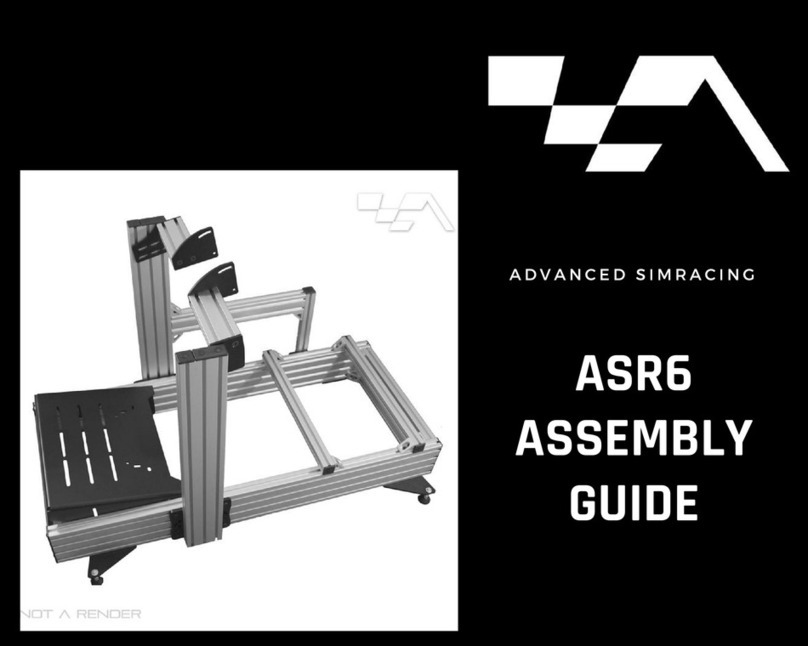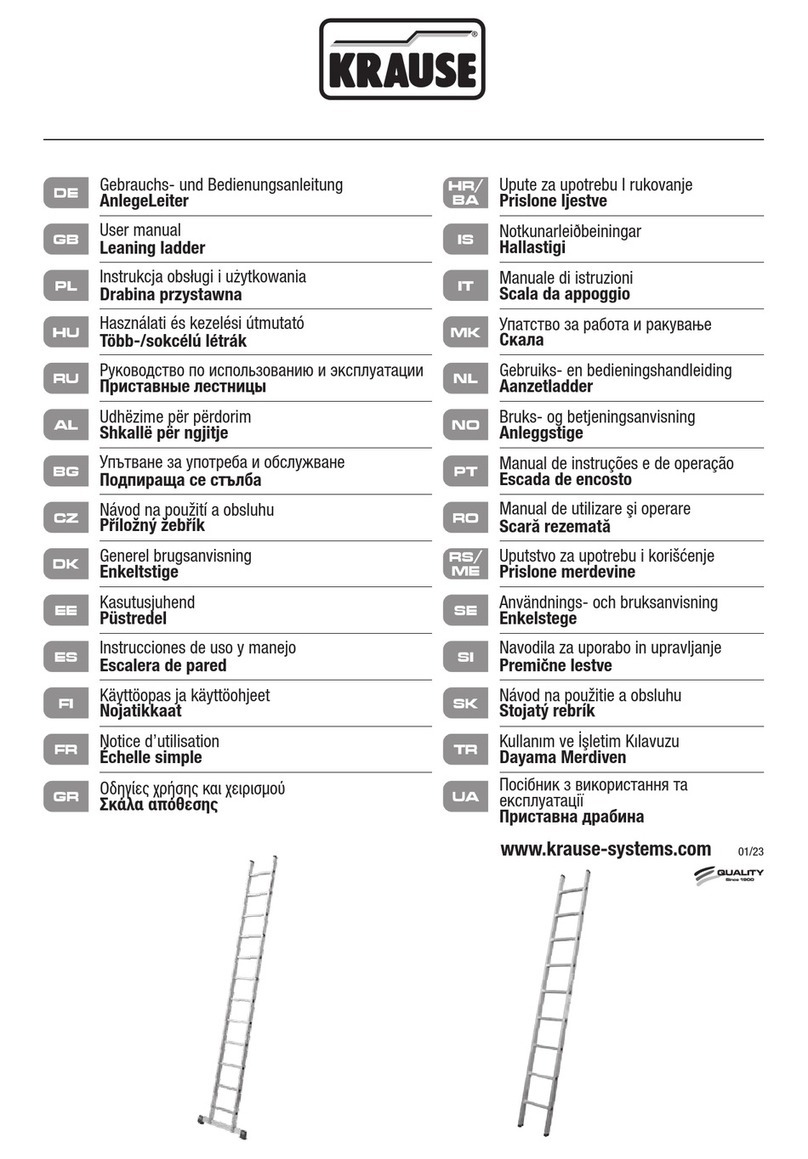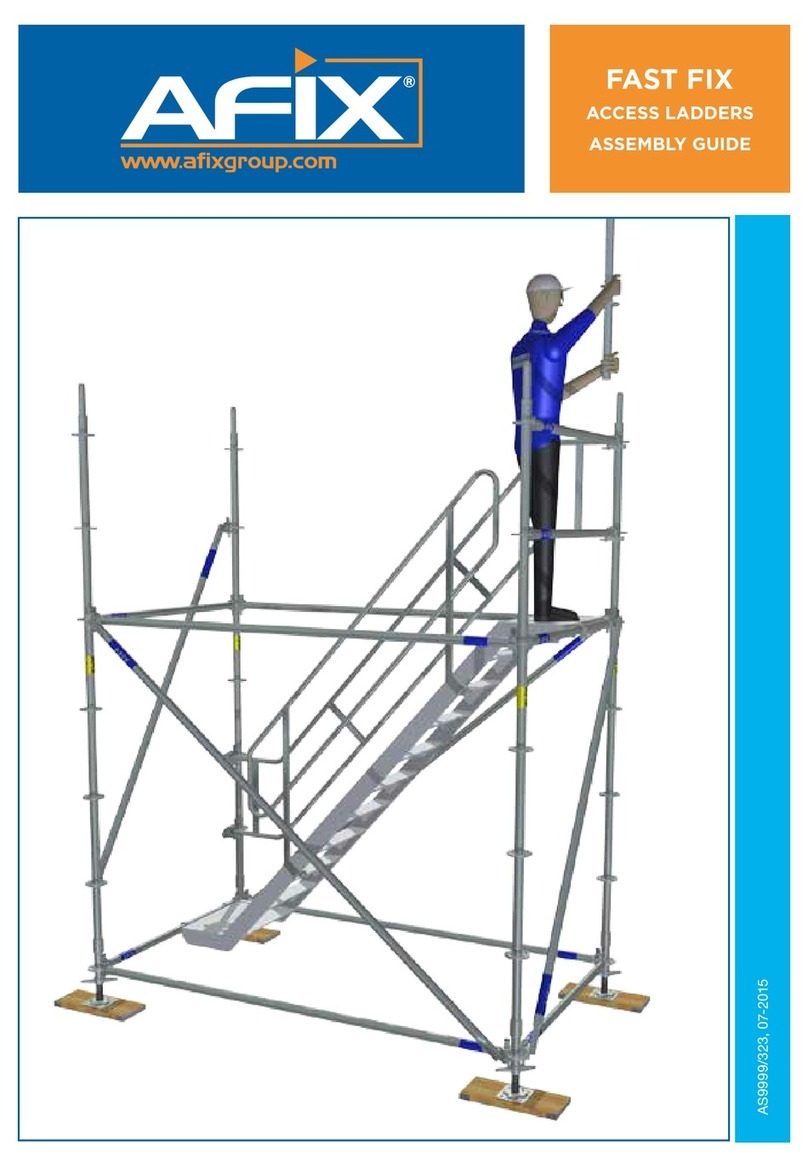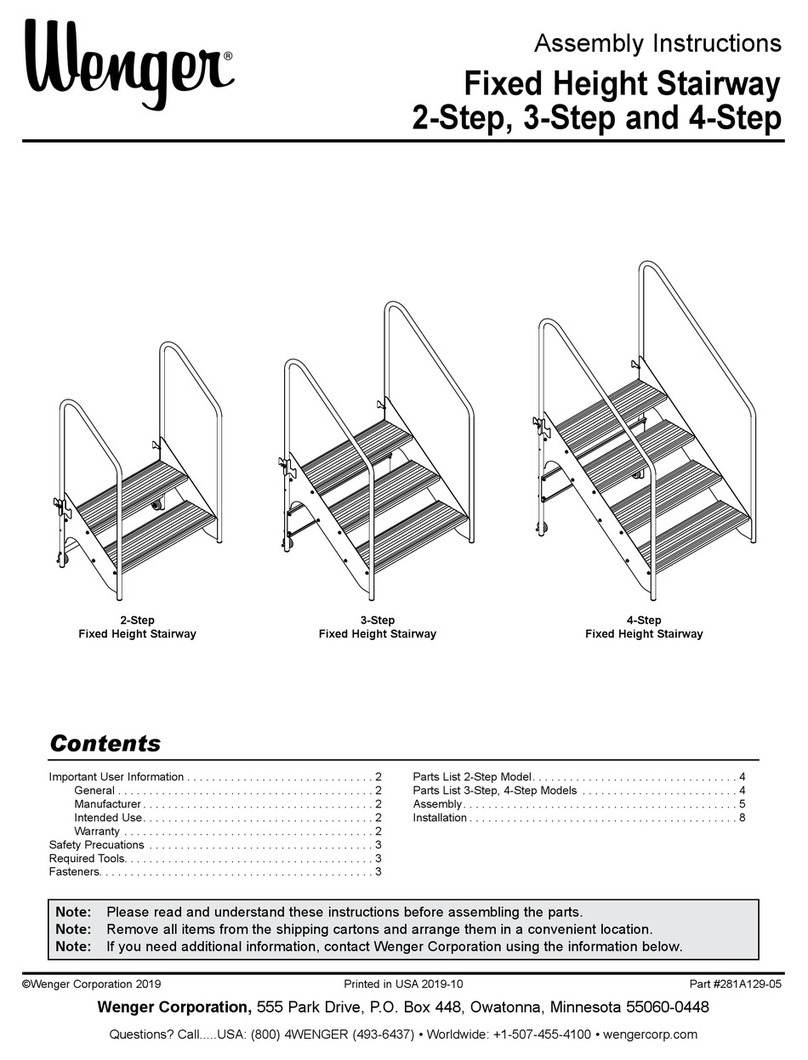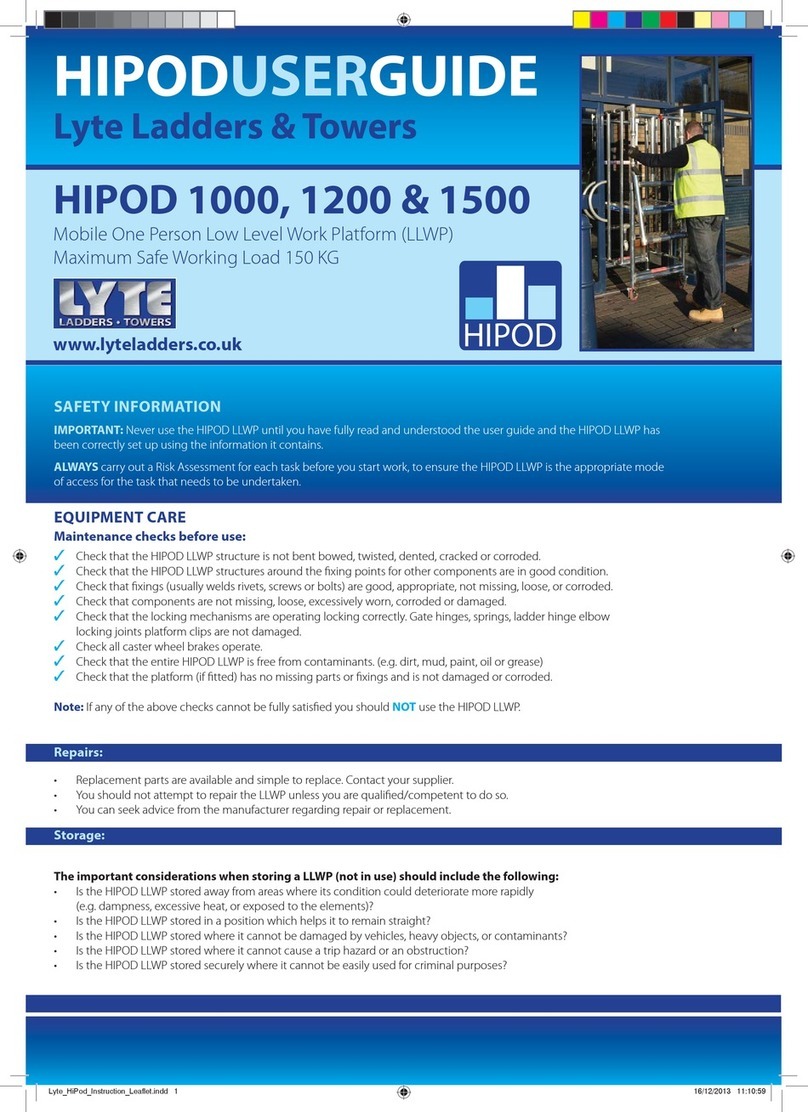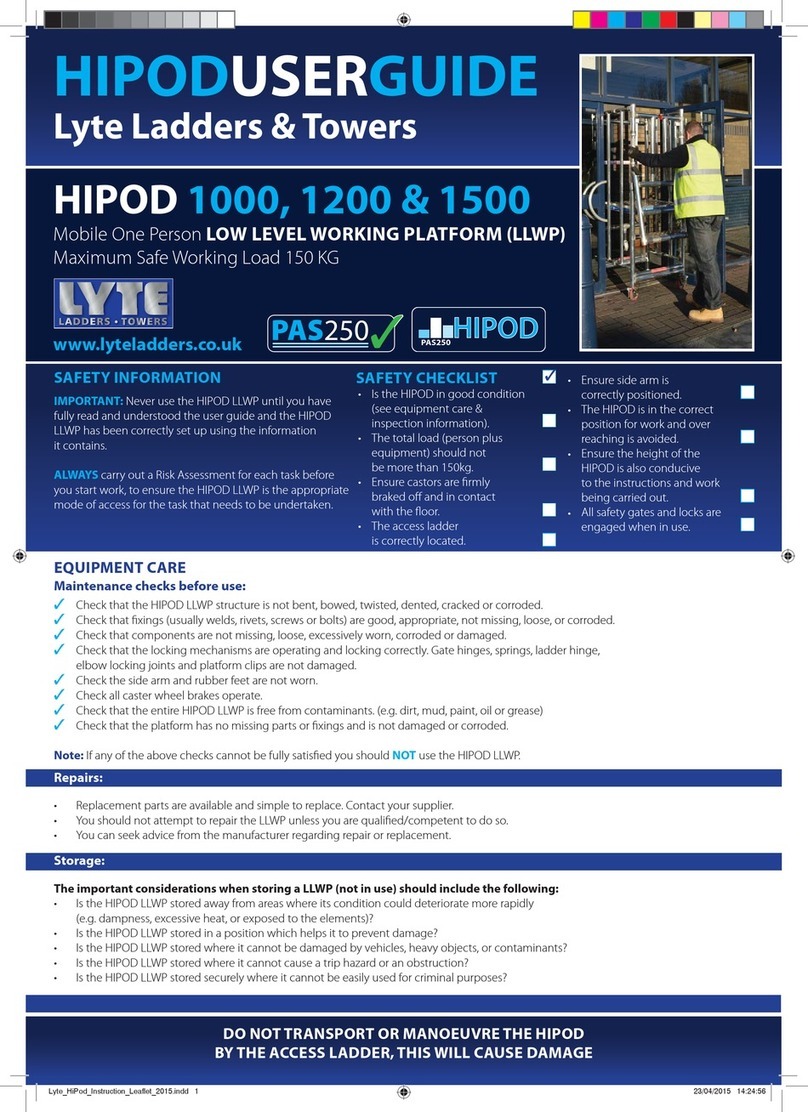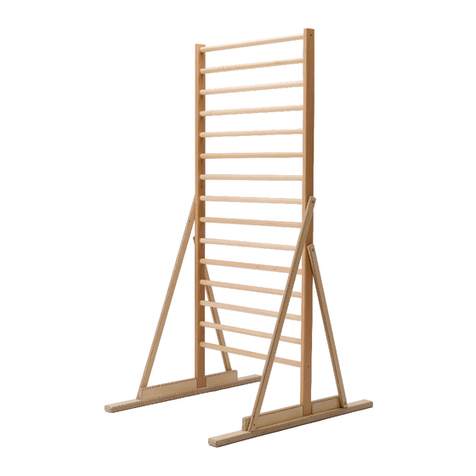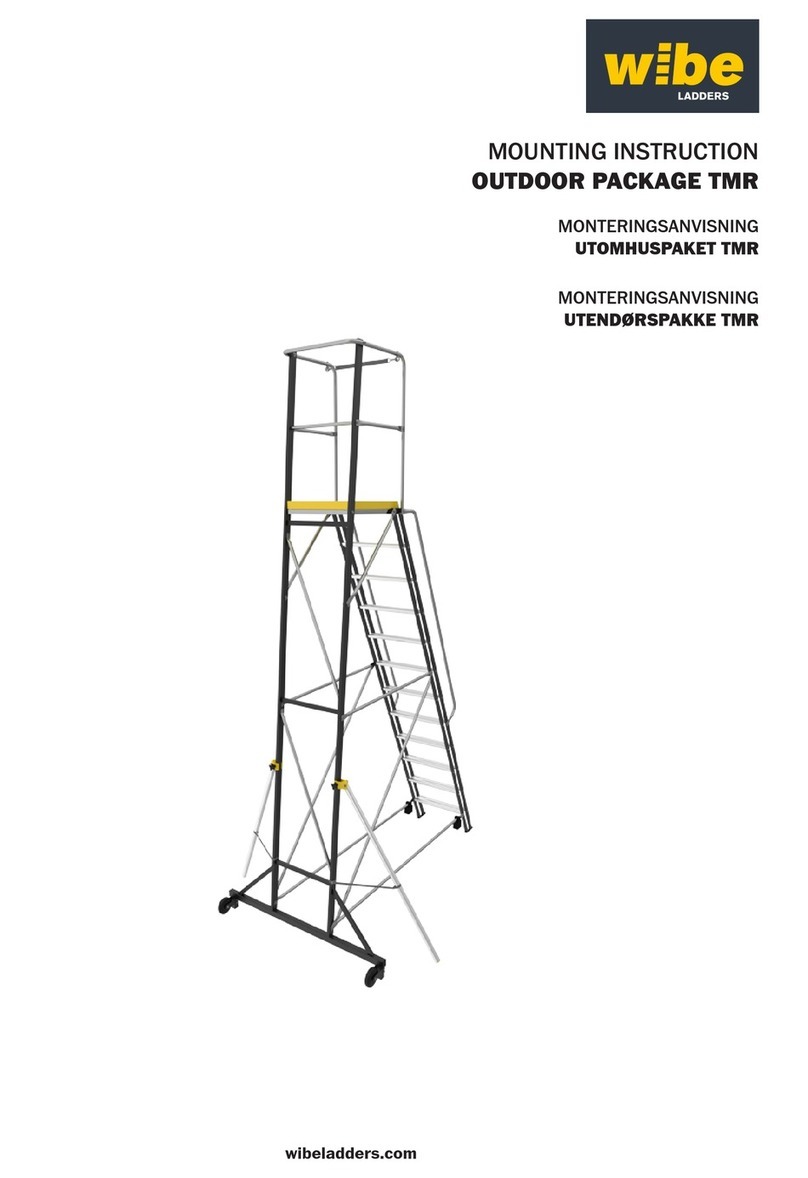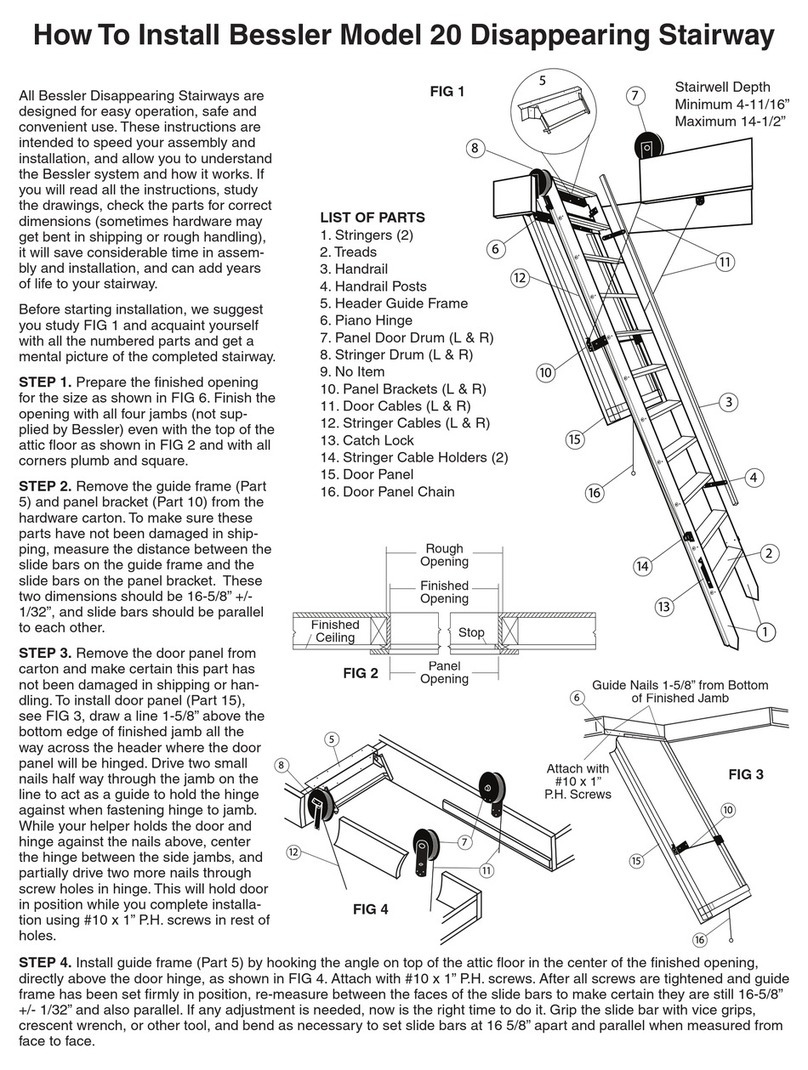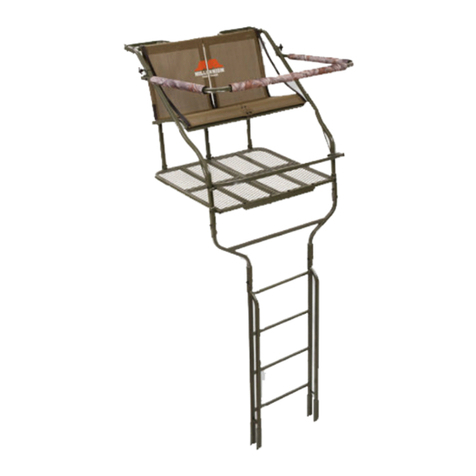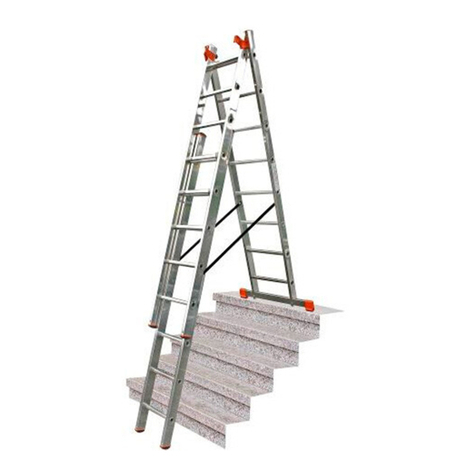
GB INSTRUCTIONS FOR THE INSTALLATION OF ATTIC STAIRS
Please read the instructions carefully to avoid installation problems.
Failure to comply with the installation instructions will render the warranty void.
Point 1. Prepare the opening for the frame installation. IMPORTANT!The ladder should not be attached to dry walls. It is also forbidden
to disassemble the stairs to individual part for the time of installation. In particular, it is forbidden to remove the screws at the tting, which
holds the ladder on the hatch of the stairs. Failure to comply with this provision will render the warranty void and will exclude the
manufacturer's liability for the safety of the product used.
Point 2. Remove the wooden/metal stick from the box. In the Standard model, attach the opening hook to the lock in accordance
with drawing 1 IMPORTANT! Failure to attach the hook poses a threat of the hatch becoming locked during the installation.
Point 3. The frame should be installed using at least 8 screws. Do not press the frame into the opening - the opening should be
slightly larger than the frame. Check the geometry, i.e. the diagonals of the box must be equal. See drawing 4A.
Point 4. Attach two wooden beams to the box (not included) - drawing 3, tie them to the box so that the box protrudes below the ceiling
level. IMPORTANT! Only very strong connections between the beam and the box and beams of appropriate length and strength should be
used to hold the stairs during the installation!
Point 5. Using wedges (not included), face the lower part of the box with the surface of the ceiling, drawing 4B.
Before the installation of the box, check the opening mechanism of the stairs.
Point 6. Before the installation of the stairs, check the diagonals of the frame, drawing 4A. If the frame is not adjacent to the beams,
to which it will be attached, insert wooden strips, which will ensure the rigidity of the frame and insert screws into them - drawung 4C.
Please use at least 8 screws 8x100 mm for permanent installation of the frame (3 on the sides of the frame and at least 1 at the front and at
the back). Spaces between the frame and the opening should be lled with tting foam - drawing 4.
Point 7.When the foam is dry, check the function of the stairs - drawing 5. IMPORTANT! Do not climb the stairs at this stage!
Point 8. To ensure that the ladder functions properly, it should form a straight line when unfolded. The individual elements of the
ladder should be in contact with each other on the whole surface and the lower part of the ladder should be cut so that its weight fully rests
on the oor. To do so, after unfolding the segments of the ladder which do not touch the oor fully and after lowering the hatch, measure
the distances A and B as shown in drawing 6 in a very accurate manner and then mark these distances on the last section of the ladder and
cut along the line joining the designated points.
IMPORTANT! It is forbidden to use the stairs if the ladder has not been cut or has been cut in an improper manner as this causes a risk of
damaging the structure of the stairs and may cause a serious accident during use.The use of stairs with an uncut ladder or a ladder cut in an
inappropriate manner will render the warranty void and will exclude the manufacturer's liability for the safety of the product used.
It is unacceptable to cut the stairs at the height of the step. If such a situation occurs, move the ladder to higher openings tting the ladder
to the hatch and perform subsequent measurements before cutting!
Point 9. If the surface against which the ladder is based is slippery (wooden oors, laminate ooring, ceramic tiles), it is necessary to
glue or nail a rubber strip or another element to reduce the slipperiness to the ladder base. Drawing 8.
Point 10. Checking if the hatch goes down after opening is the last element of assembly verication. The hatch should go down
between 10-40 cm from the ceiling. If it goes down more, please tighten the spring by one link of the chain (once on the right and once on
the left side) and check the descending motion again. The tightening should be performed with particular care with the hatch closed.
Drawing 10. IMPORTANT! In no circumstances may the spring be tightened with the hatch open!
The stairs purchased are covered by a 24-month warranty from the date of purchase.The purchase document constitutes the basis
for making a complaint. Damaged or incomplete stairs may not be installed or used in any event. A complaint should be submitted
immediately if any defects are noticed. Failure to comply with the above will render the warranty void.
IMPORTANT! The Manufacturer reserves the right to introduce design changes and technical innovations without prior notice.
LOFT LADDER

